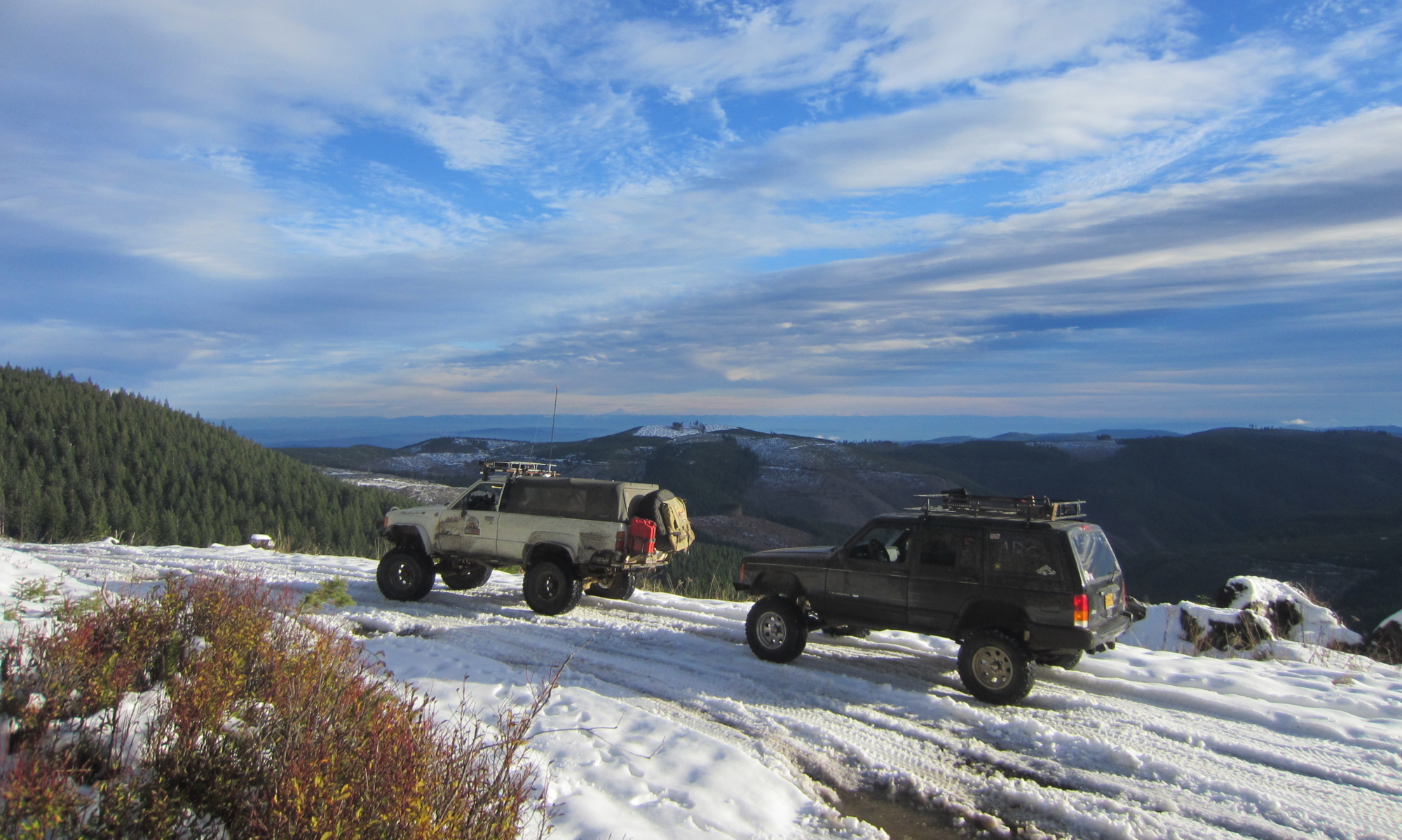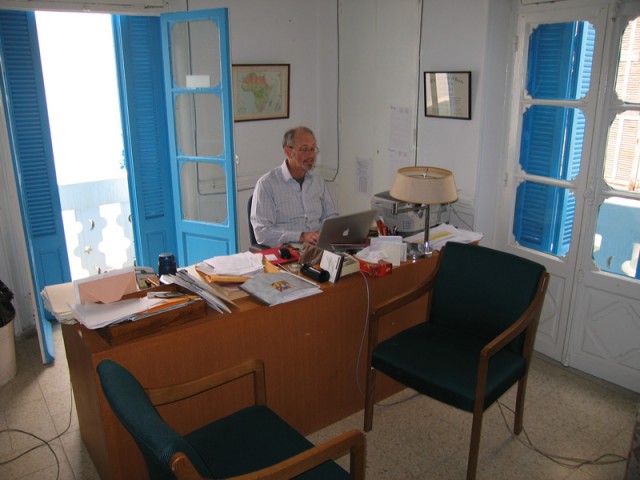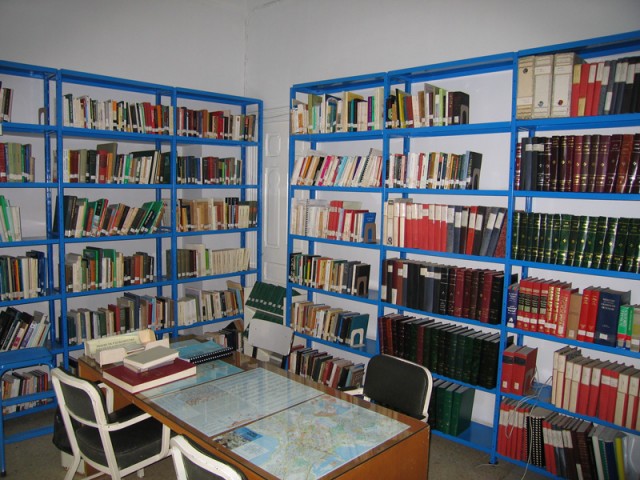As part of my internship at CEMAT (the Center for Maghrebi Studies at Tunis), I helped run the Fulbright Islamic Scholars Conference. I was lucky enough to accompany the group on a guided tour of Kairouan, the fourth holiest city in Islam, and one of my favorite cities in Tunisia. The tour was mostly done in Standard Arabic, I’m sure a surprising site for the majority of the Tunisians who saw us considering that most of us looked very European. We were definitely not your average tour group!
In addition to doing the normal sites, we also were allowed into the prayer hall and the minaret of the Grand Mosque of Kairouan and into the inner sanctum of the Tomb of the Barber of the Prophet. The best part of the whole day was the indignation an old Frenchman suffered when he was told he couldn’t go into the prayer hall as we wandered around inside. We probably were the first group of westerners in a very long time to be given such privileges.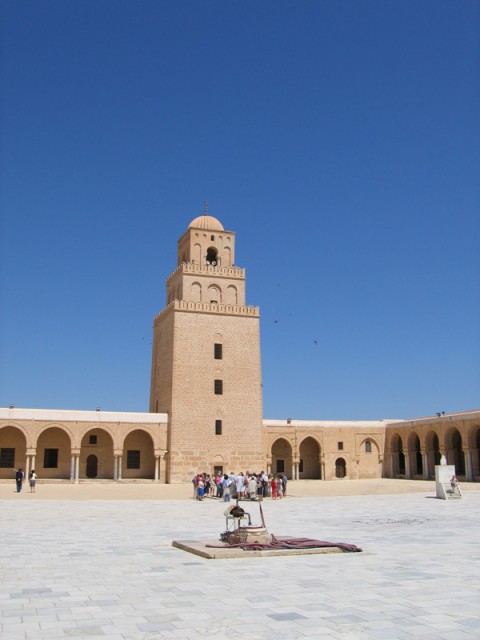
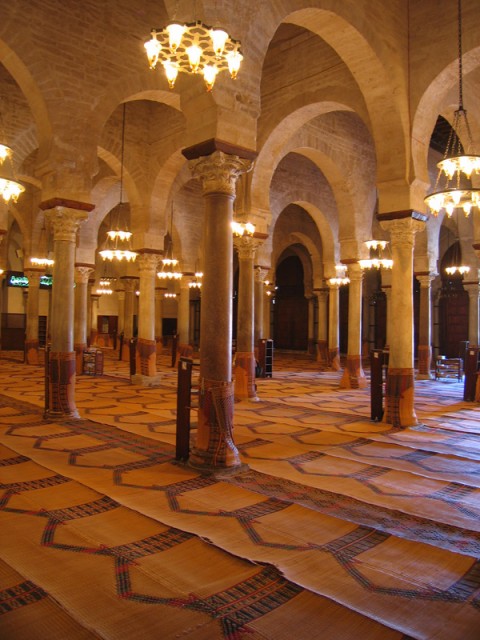
Inside the prayer hall of the Grand Mosque.

One of the Islamic Scholars. His family is of Irish decent. Converting to Wahabist Islam was a recent occurrence in his life.
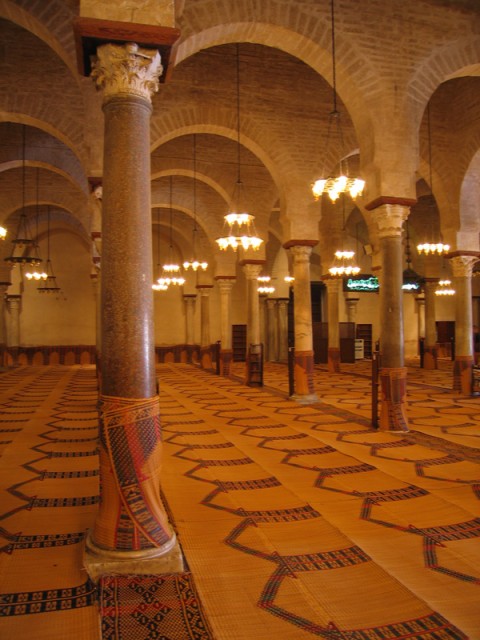
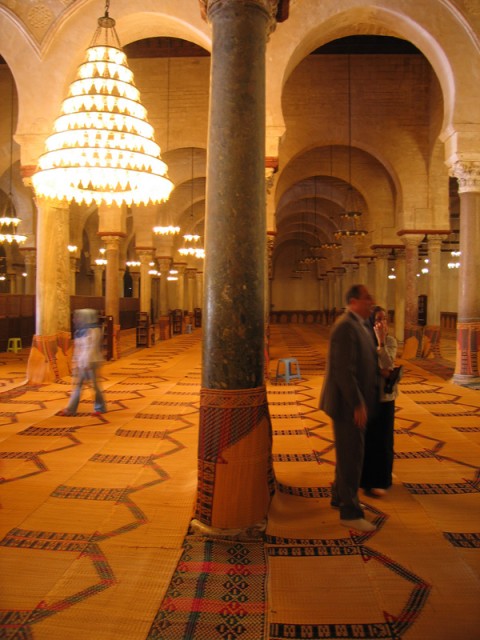
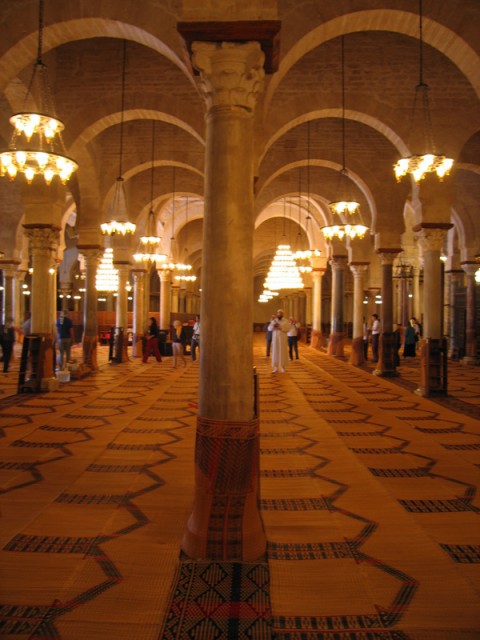
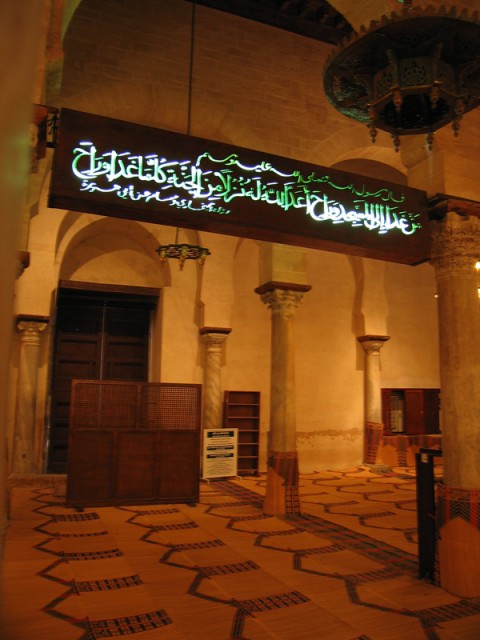
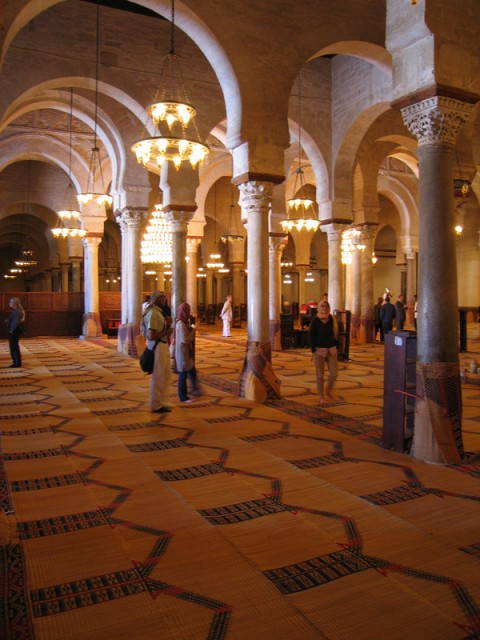
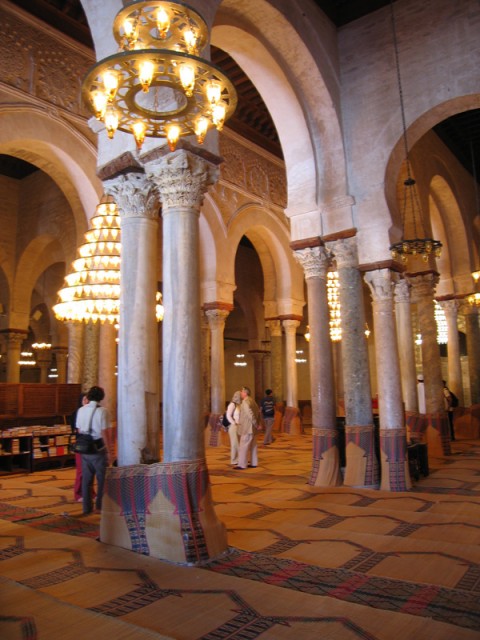
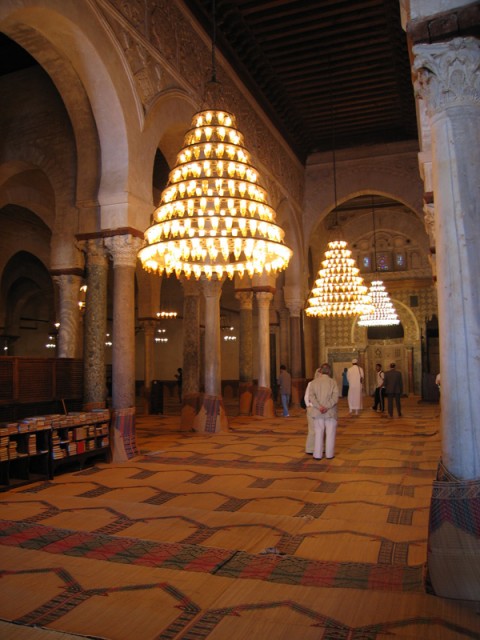
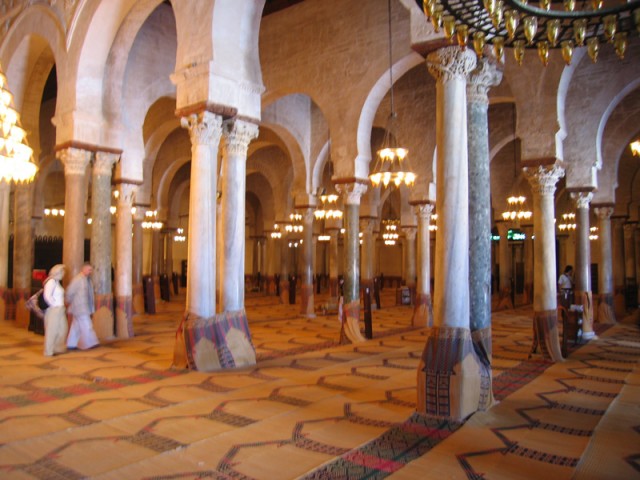
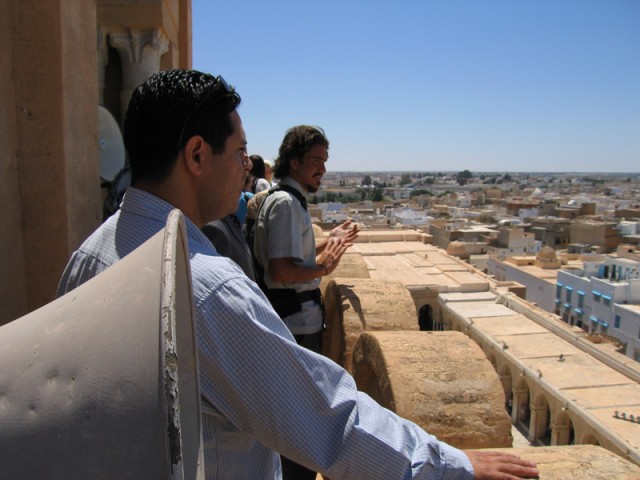
On top of the minaret at the Grand Mosque. We were lucky to be in between the call to prayer, otherwise we probably wouldn’t have any ear drums left. That’s Riadh, the CEMAT Assistant Director, behind the loudspeaker.
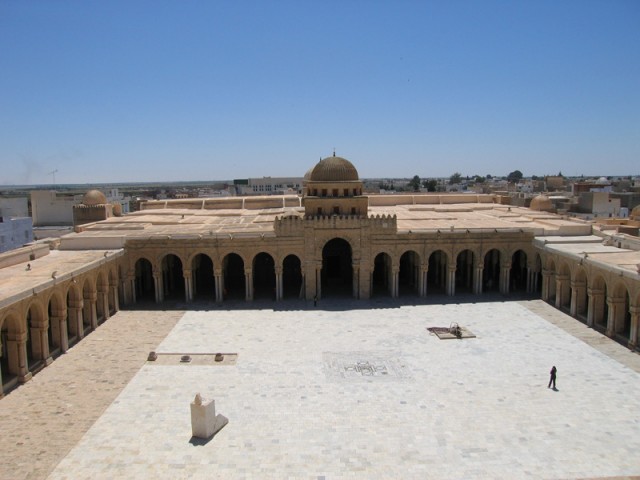
The courtyard. Used on days when there’s an overflow crowd. Note the way it gently slopes into the hole in the middle. The entire area underneath the courtyard is a massive cistern where rainwater collected from the courtyard and roof is stored. The water is used to wash the building.
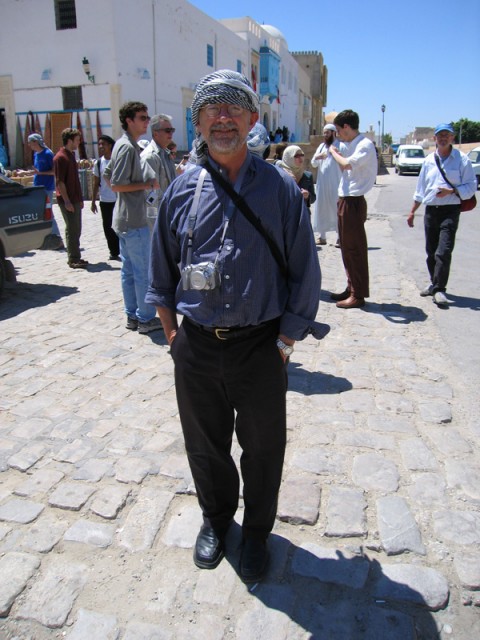
Phil, one of the local scholar crowd, looking good in a head wrap. His partner was on a Fulbright grant to teach international health at one of the universities in Tunis.
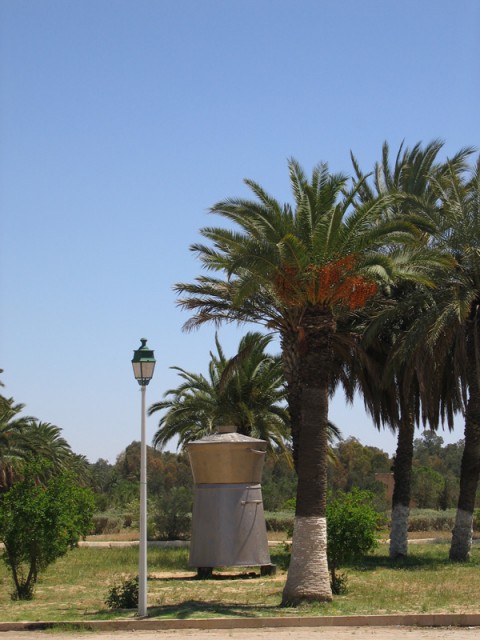
The world’s largest couscous cooker at the Raqqada Islamic Art Museum outside Kairouan. It was designed to serve something like 5000 of President Bourguiba’s closest friends. Raqqada, aside from being the site of one of the earliest major Islamic settlements in Tunisia and the home to an unrivaled North African collection of early Islamic Art, is also home to one of President Bourguiba’s country houses. Current president Ben Ali has no use for such houses. He has palaces.

At the Mosque of the Barber of the Prophet.
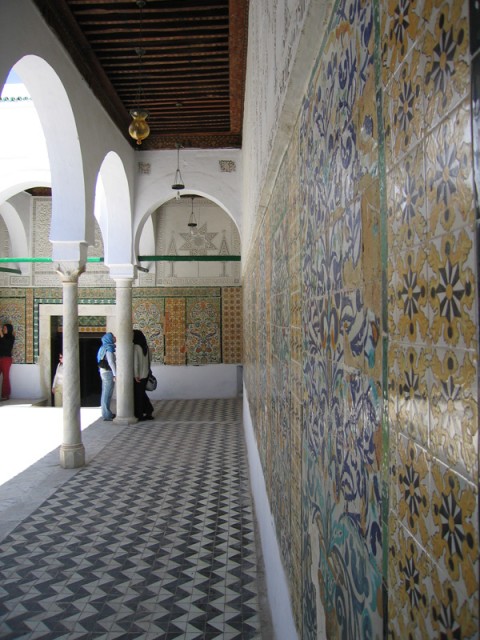
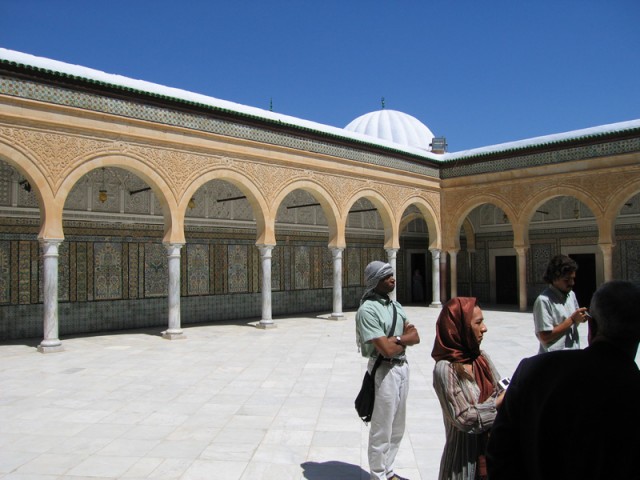
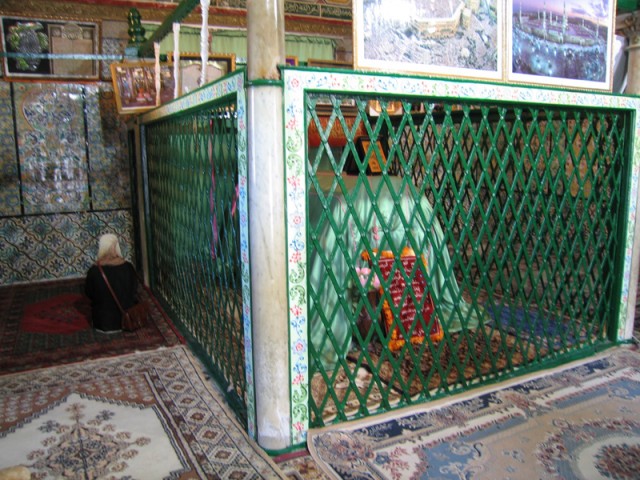
The Barber rests here.
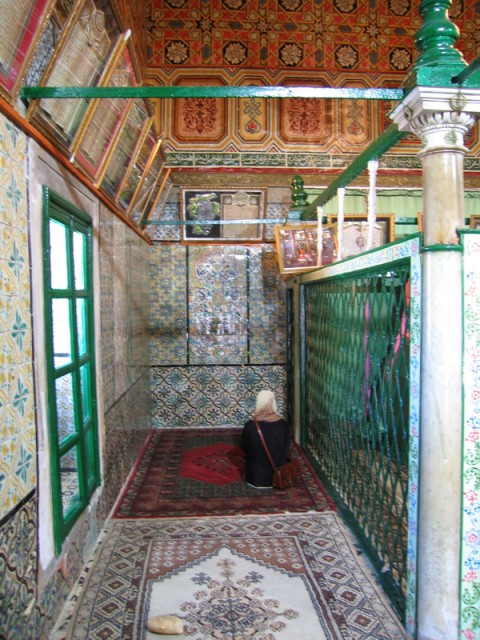
One of the Islamic Scholars praying. She is of Arab decent.
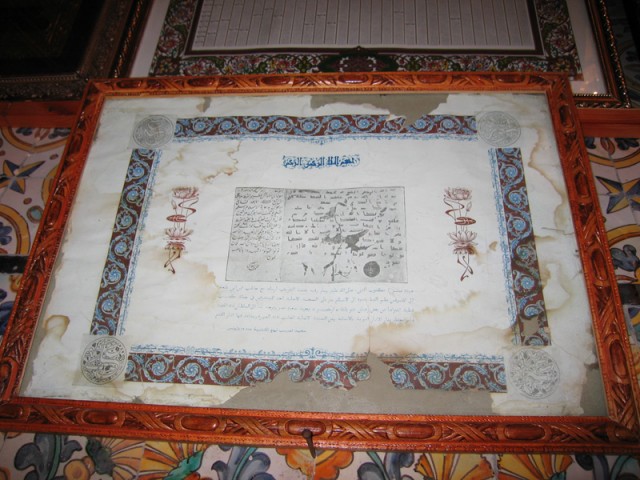
A letter from the Prophet to the Barber. Well, rather, a photocopy of the letter.
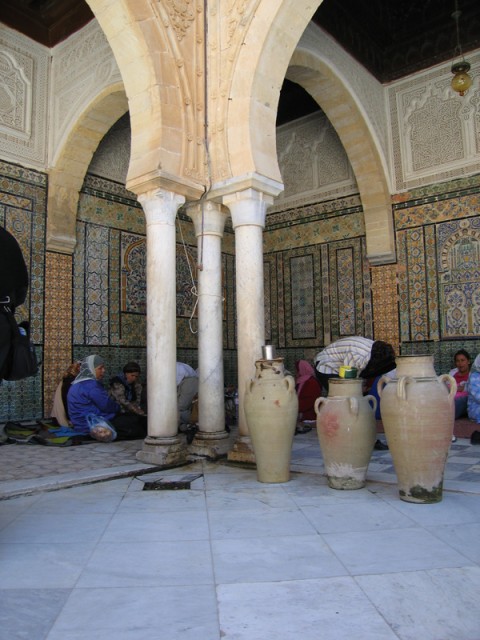
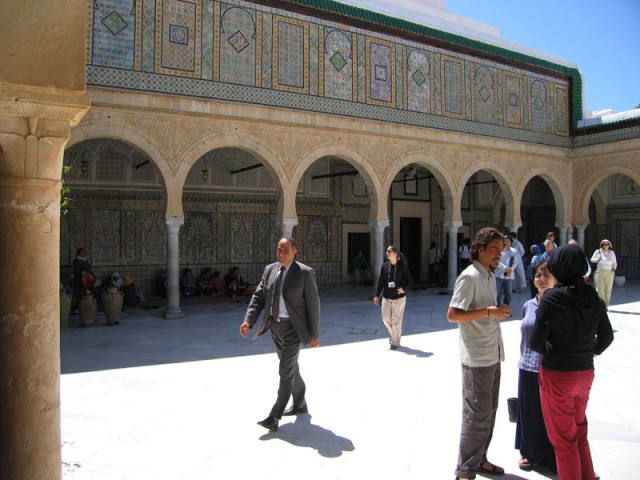
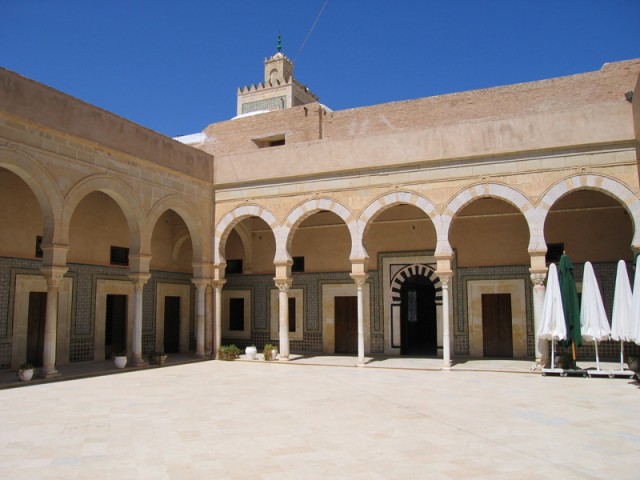
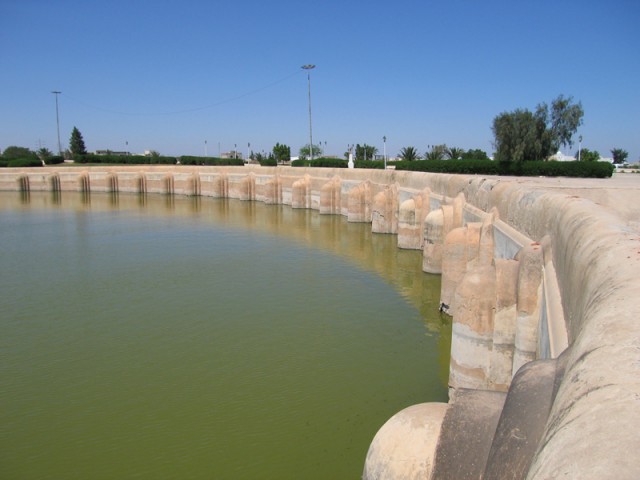
The Aghlabid Basins in Kairouan.
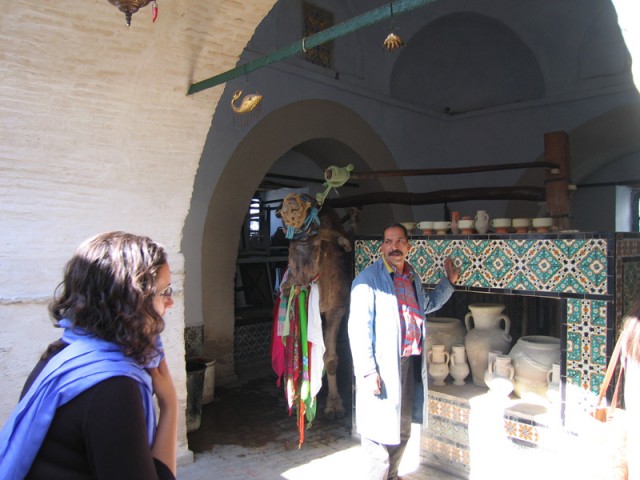
The camel walks around in a circle. It’s attached to a system of cogs, gears, pulleys and belts. One turn of the camel brings up about three liters of water from an underground cistern or well. The setup used to be used to supply the local mosque with water for washing but now is used to show tourists a camel walking around in a circle.
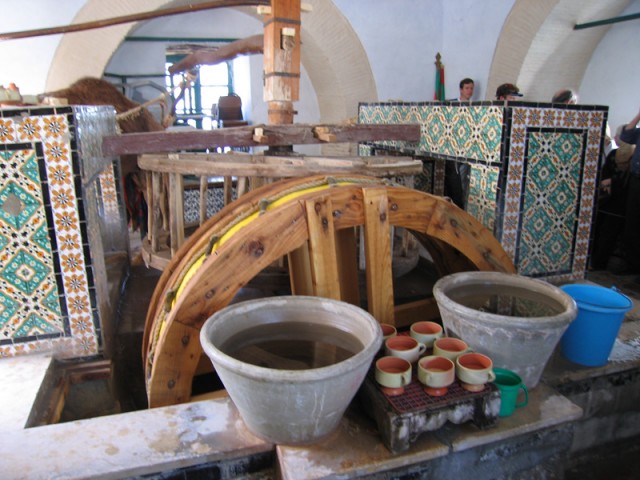
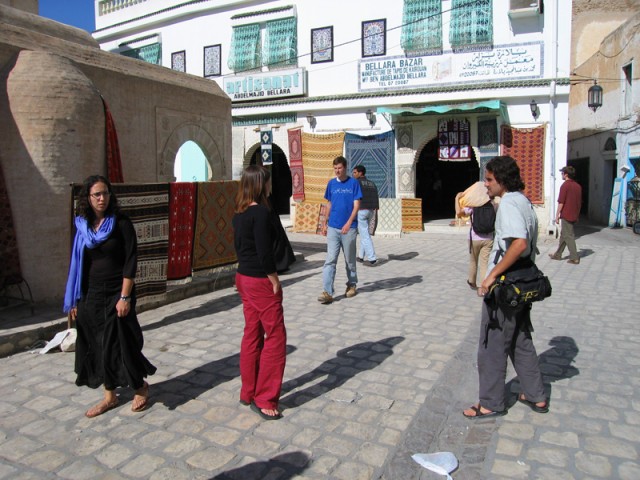
Some of the group wandering around outside the camel well.
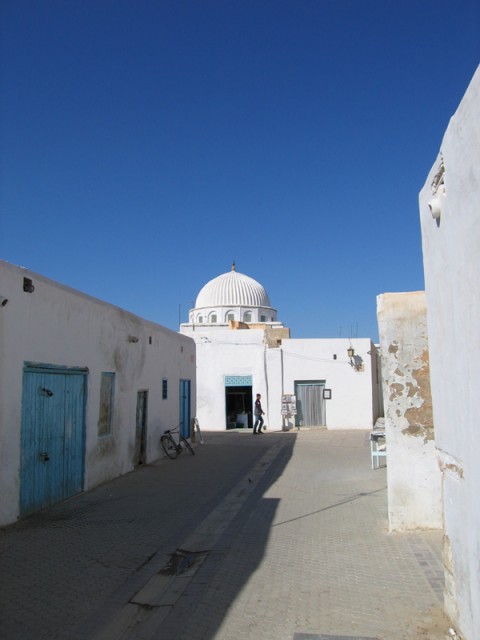
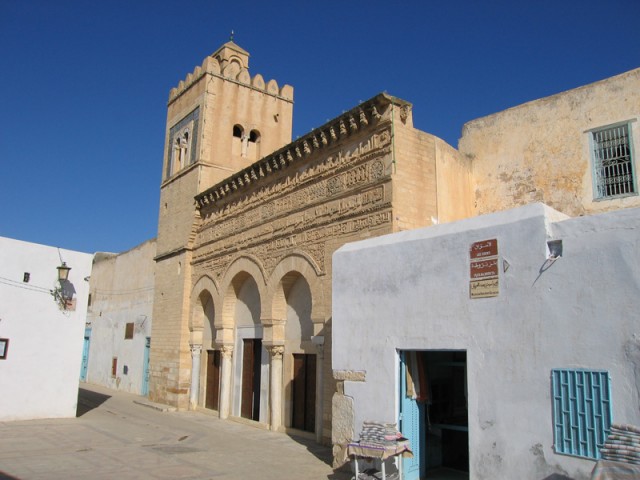
The Mosque of the Three Doors.
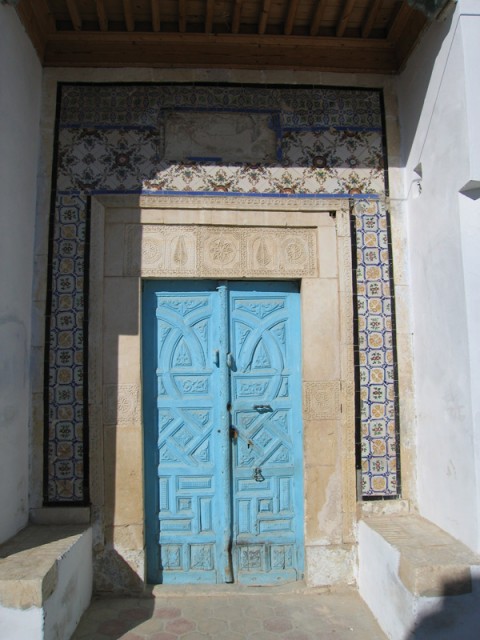

The Kairouan electric distribution grid.
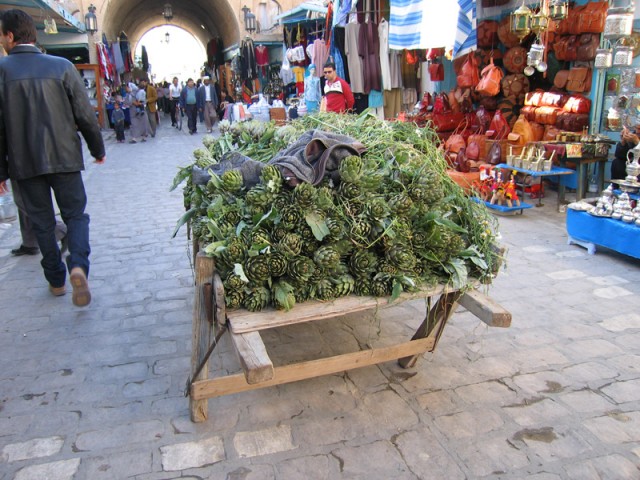
Artichokes anyone?
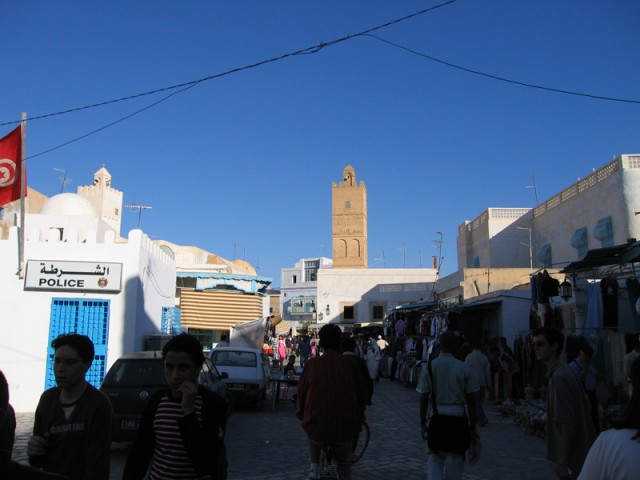
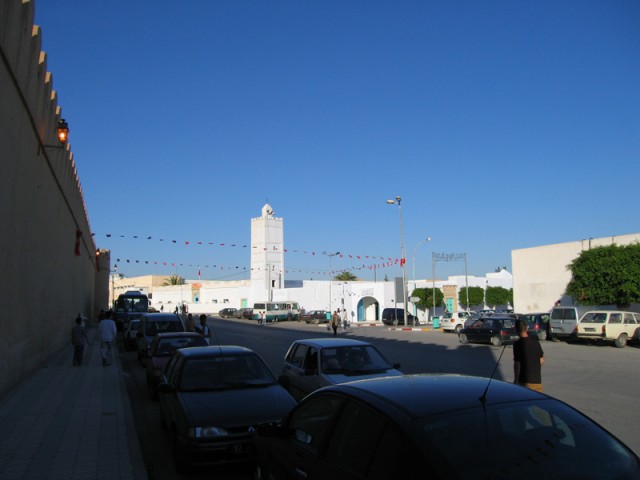
Outside the walls of Kairouan on the way back to the bus.
